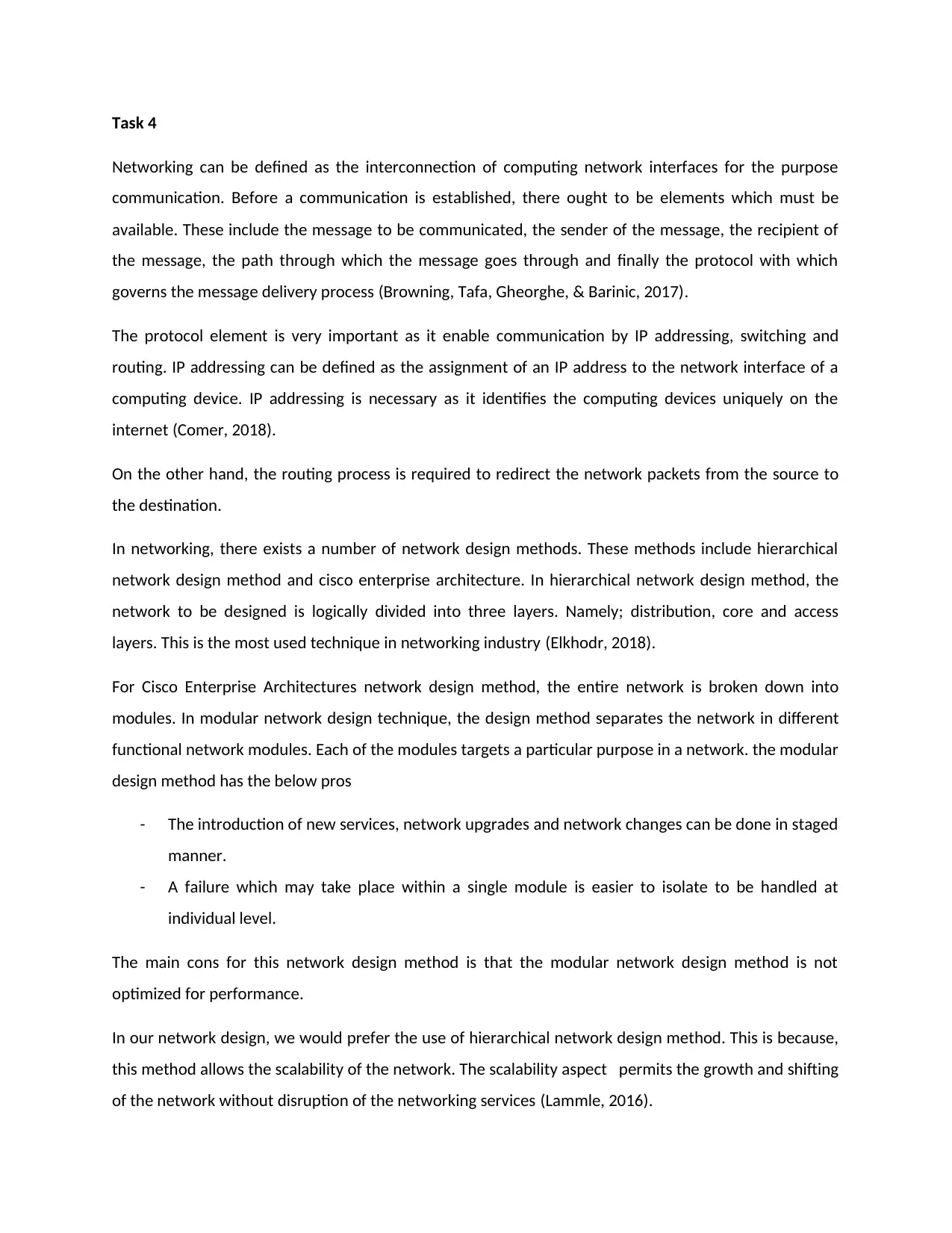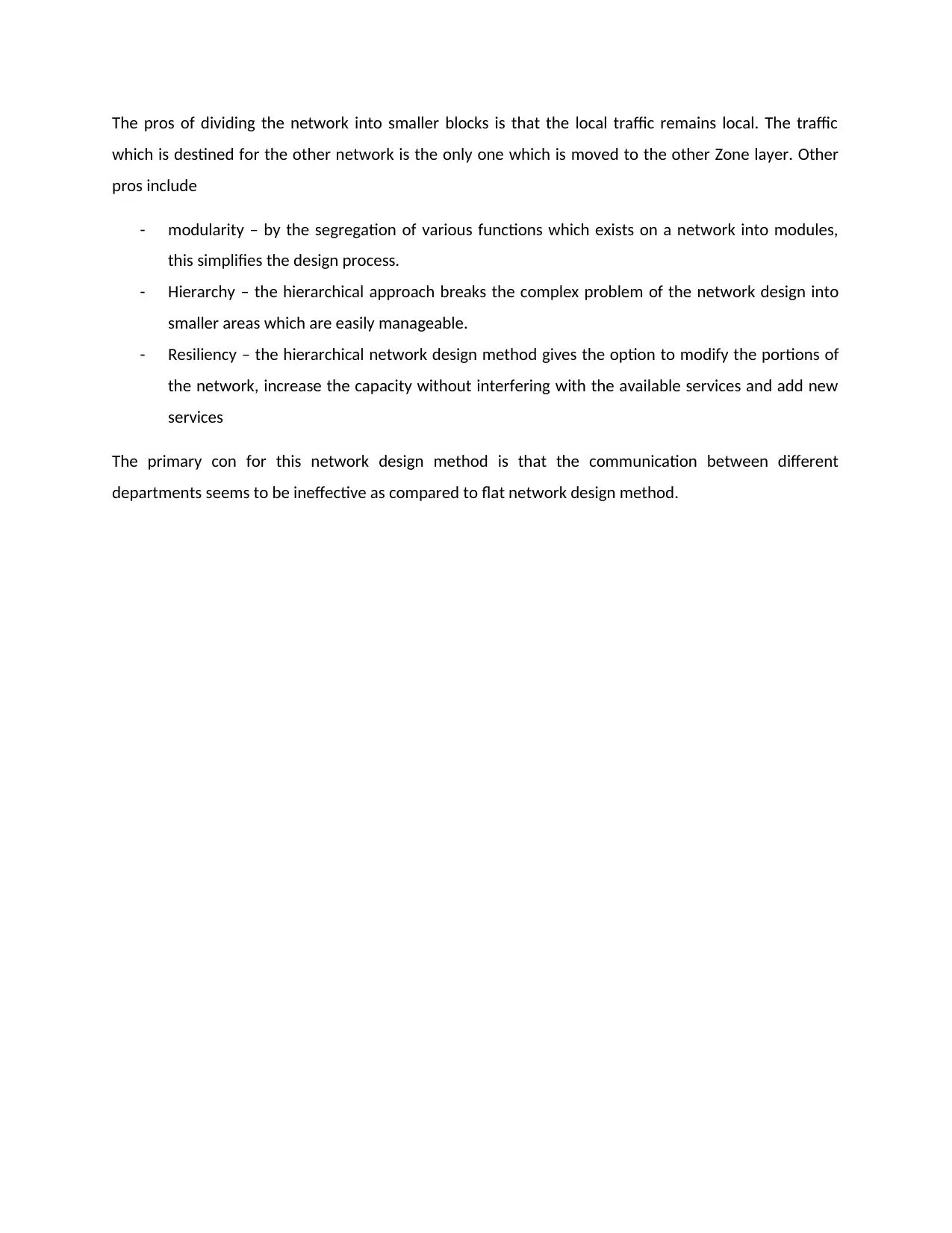Network Design Methods for Assessment 4: Pros, Cons, and Choice
VerifiedAdded on 2022/09/02
|4
|685
|17
Discussion Board Post
AI Summary
This discussion board post explores various network design methods, including hierarchical and modular approaches, to address the requirements of Assessment 4. The post begins by defining key networking elements such as message, sender, receiver, path, and protocol, emphasizing the importance of protocols in enabling communication through IP addressing, switching, and routing. It then delves into two primary network design methods: the hierarchical network design method, which divides the network into core, distribution, and access layers, and the Cisco Enterprise Architectures network design method, which uses a modular approach. The author provides a detailed comparison of these methods, highlighting the pros and cons of each, such as scalability, modularity, and resiliency for hierarchical design versus performance limitations for modular design. Ultimately, the post justifies the selection of the hierarchical network design method for its scalability and ability to accommodate network growth without disrupting services. References to relevant literature are also provided.
1 out of 4










![[object Object]](/_next/static/media/star-bottom.7253800d.svg)